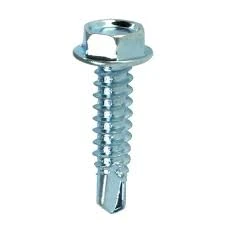bracing for steel structures
Bracing for Steel Structures An Essential Component in Structural Engineering
In the realm of structural engineering, bracing plays a crucial role in ensuring the stability and integrity of steel structures. Defined as the system of structural elements that provide lateral support, bracing is essential for resisting lateral forces that can arise from wind, seismic activity, or other dynamic loads. The design and implementation of bracing are vital considerations during the planning and construction phases of steel structures.
Understanding Bracing Types
Bracing systems can be categorized into several types, each with its unique properties and advantages. The most common types include
1. X-Bracing This system employs diagonal members that cross each other in an X formation, effectively providing enhanced lateral stability. It is often used in tall buildings and towers due to its simplicity and efficiency.
2. K-Bracing K-bracing consists of diagonal members that connect at a central vertical element, forming a 'K' shape. This type is advantageous in providing good structural performance while minimizing the amount of steel needed.
3. Chevron Bracing In this configuration, diagonal members are arranged in a 'V' shape, resembling the chevrons on military insignia. This design allows for more efficient load transfer and is particularly effective in resisting axial loads.
4. Braced Frames These systems incorporate bracing elements into the framing structure itself, enhancing the overall stiffness of the frame. They can be used in combination with moment-resisting frames to provide a balanced response to lateral forces.
The Significance of Bracing in Structural Performance
Bracing is indispensable in the design of steel structures for several reasons. Firstly, it significantly improves the lateral stability of buildings, preventing excessive sway during wind events or earthquakes. Without adequate bracing, structures can suffer from structural failure or excessive deflection under load, which can endanger occupants and lead to costly repairs.
bracing for steel structures

Secondly, bracing helps to distribute loads more evenly throughout the structure. By providing a path for lateral loads to be transmitted to the foundation, bracing mitigates the risk of localized failures and ensures that all parts of the structure work together harmoniously.
Moreover, bracing can enhance the overall economy of a structure. By allowing for the reduction of heavy structural elements, such as columns and beams, bracing can lead to cost savings in both materials and construction time. This economic benefit is critical in a competitive construction market, where efficiency and cost-effectiveness are paramount.
Design Considerations for Effective Bracing
When designing a bracing system for a steel structure, several factors must be considered to ensure its effectiveness
- Load Analysis Engineers must conduct comprehensive load analyses to understand the types and magnitudes of forces that the structure will experience. This analysis guides the selection and configuration of the bracing system.
- Material Selection The choice of materials is crucial in determining the performance of the bracing system. Steel is commonly used due to its high strength-to-weight ratio, but considerations regarding corrosion resistance and fatigue must also be taken into account.
- Connection Design The connections between bracing members and the main structural elements play a vital role in the performance of the bracing system. Proper connection design is essential for transferring forces effectively and ensuring overall structural integrity.
- Building Codes and Standards Compliance with relevant building codes and engineering standards is non-negotiable. These guidelines ensure that bracing systems are designed to withstand specified loads and provide a safe environment for occupants.
Conclusion
In conclusion, bracing is an integral component of steel structures that enhances their stability, load distribution, and economic efficiency. By selecting the appropriate bracing type and considering critical design factors, engineers can significantly improve the performance and safety of buildings. As urban environments continue to evolve and expand, the importance of innovative bracing solutions will only grow, making it an exciting area of focus within structural engineering. As we face increasingly complex engineering challenges, the role of bracing in steel structures remains pivotal, ensuring that our built environment can withstand the tests of time and nature.
-
Wedge Anchor Bolts: Secure Fastening SolutionsNewsAug.05,2025
-
Insulation Fixings: Secure and Durable SolutionsNewsAug.05,2025
-
Full Threaded Studs: Versatile Fastening SolutionsNewsAug.05,2025
-
Expanding Fasteners: Secure and Reliable SolutionsNewsAug.05,2025
-
Butterfly Toggle Anchors: Secure and Easy to UseNewsAug.05,2025
-
Bracing Solutions for Steel StructuresNewsAug.05,2025
